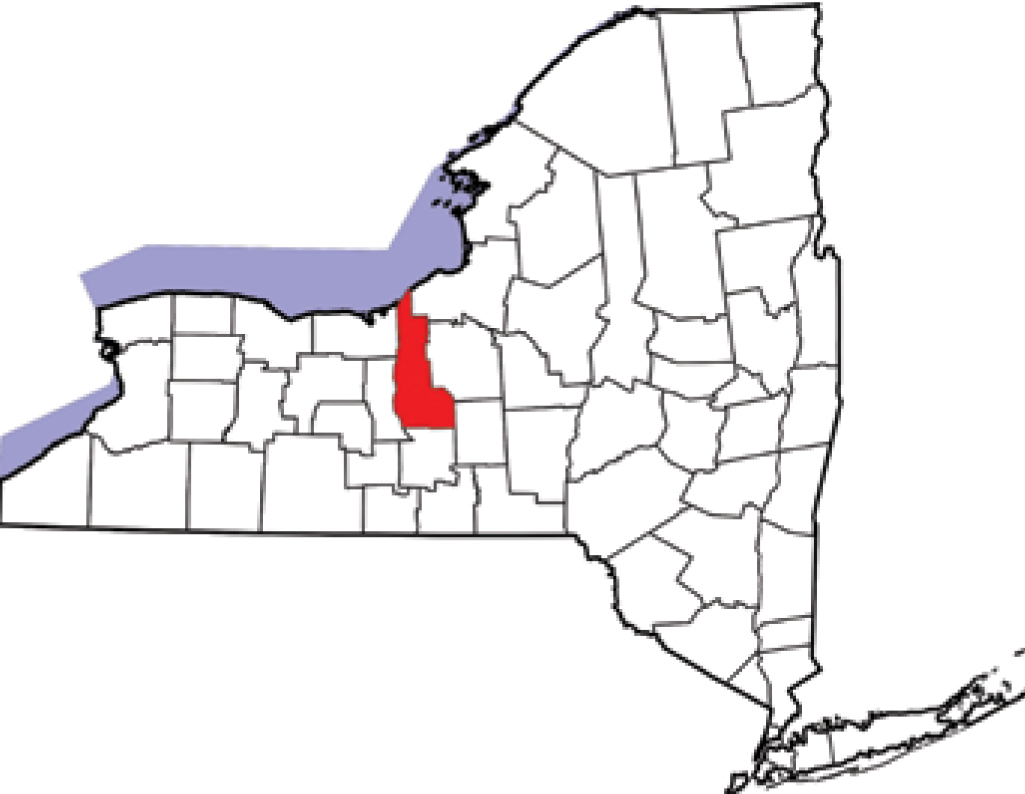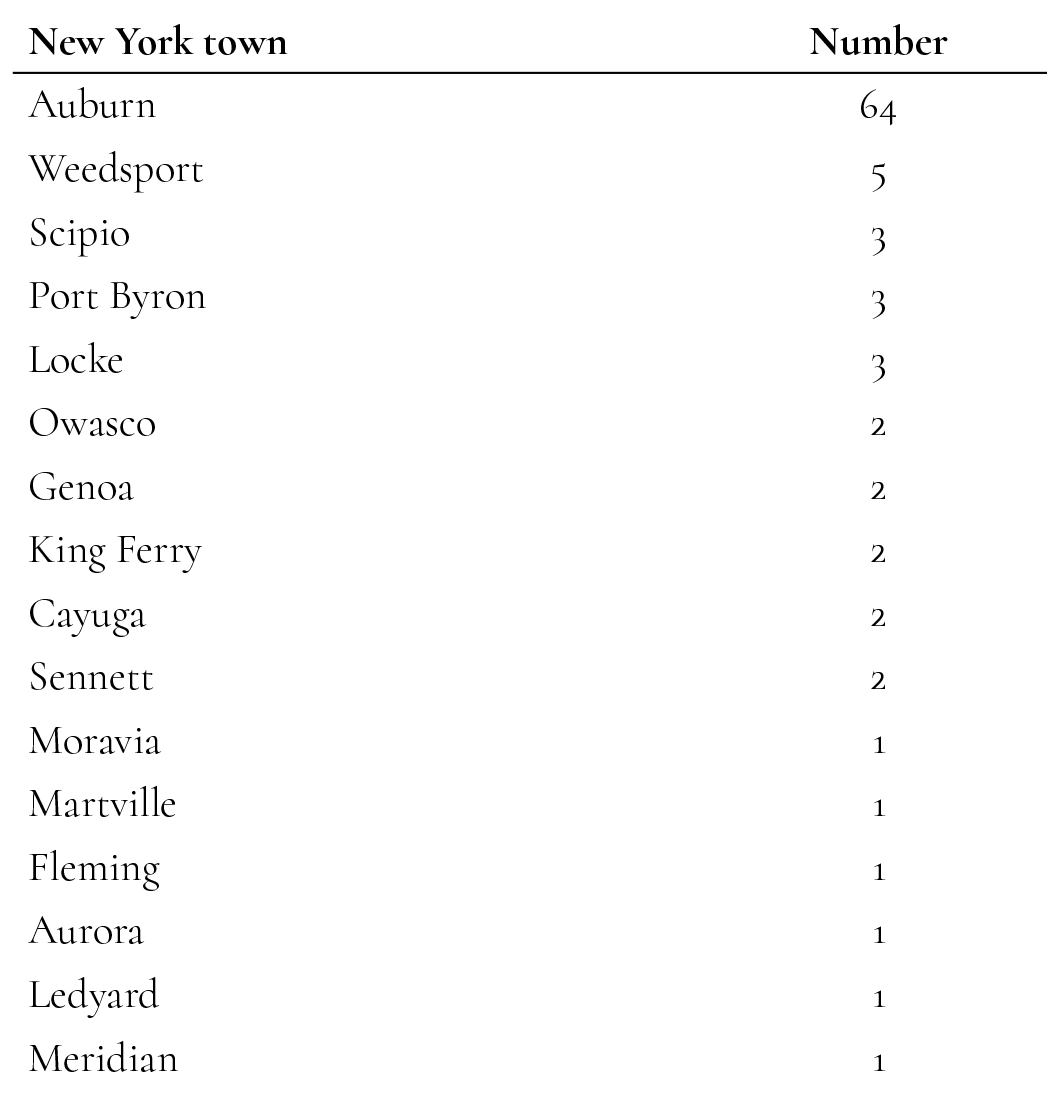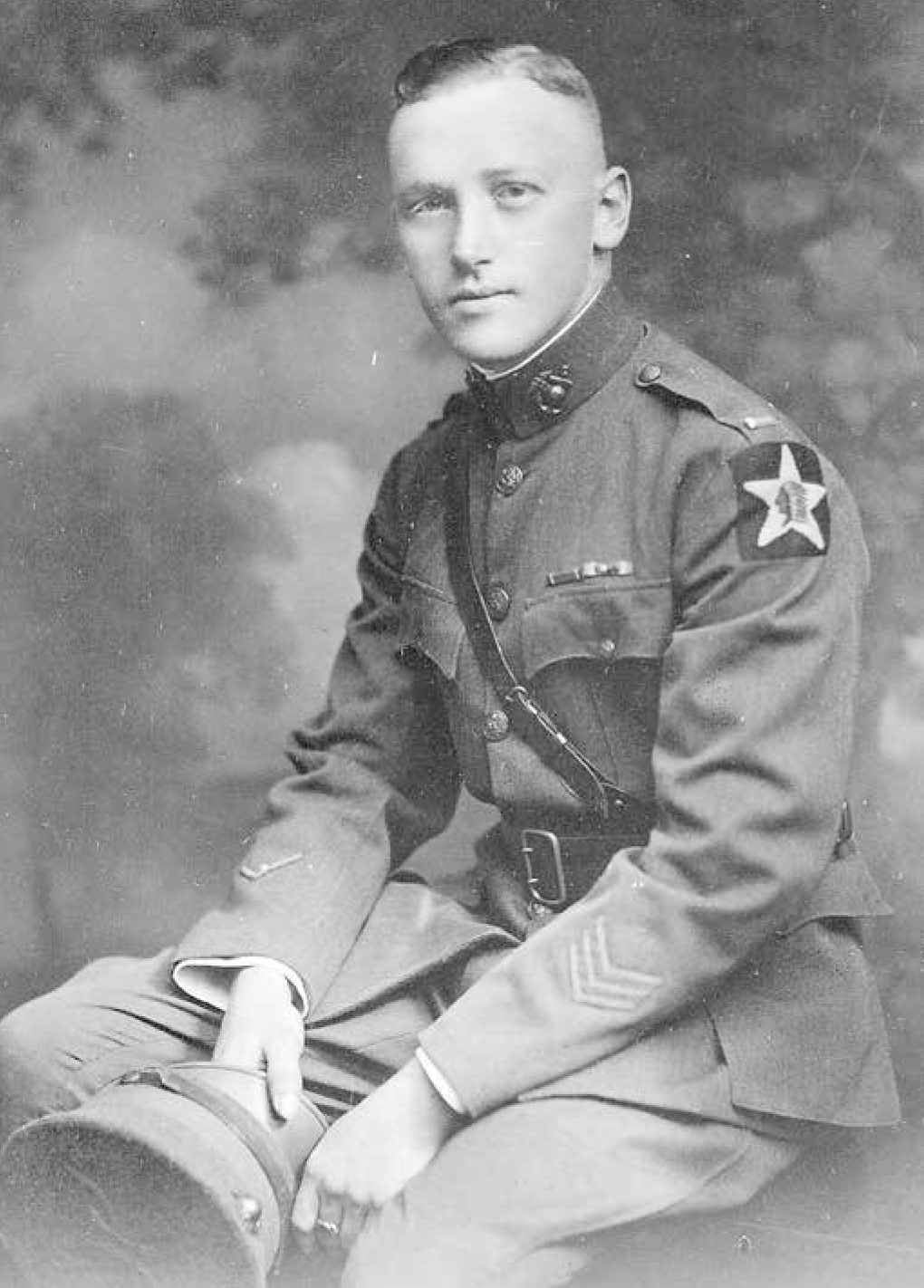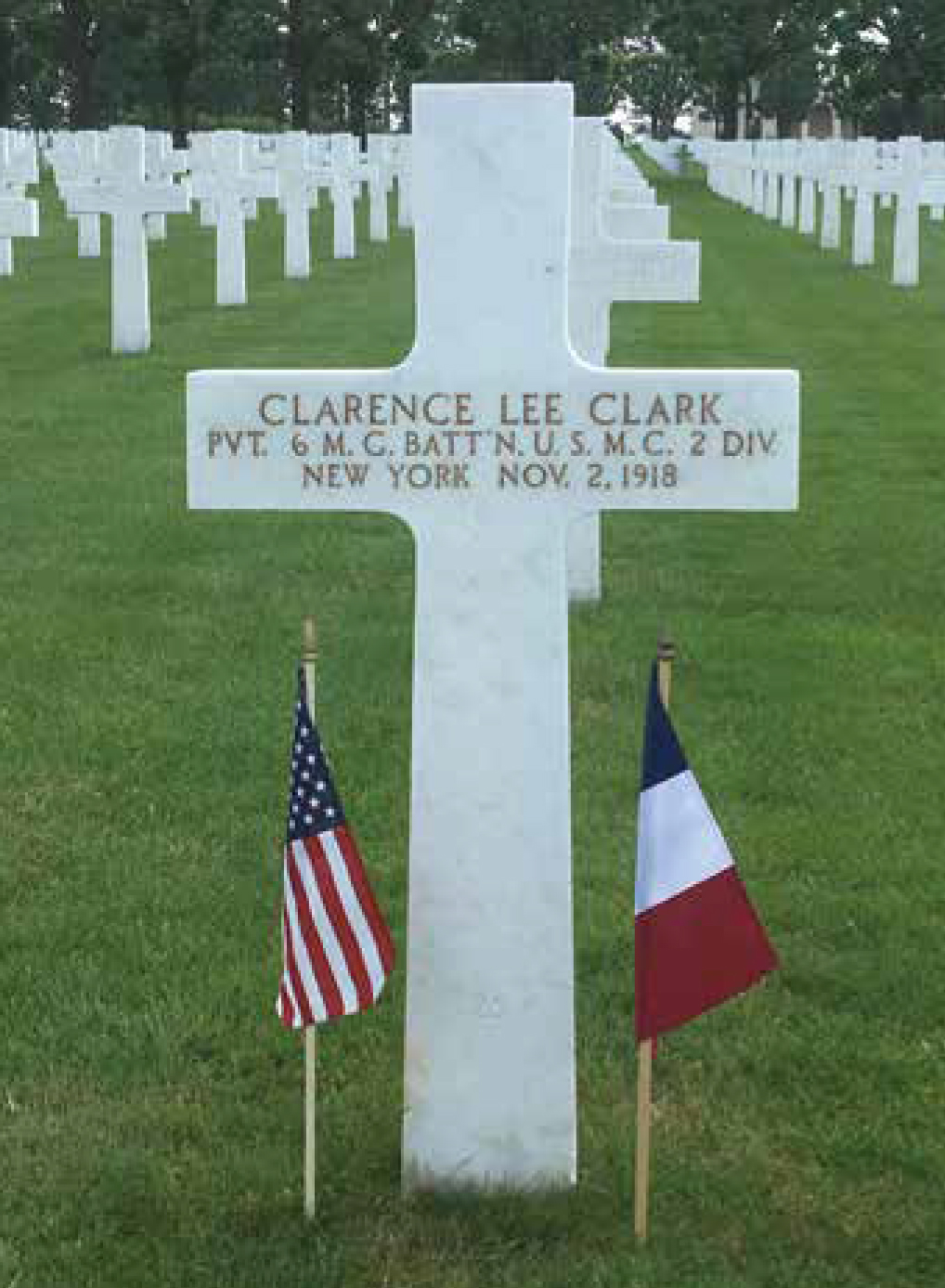PRINTER FRIENDLY PDF
EPUB
AUDIOBOOK
On 6 April 1917, the United States entered the First World War against Germany. At the start of the war in 1914, the Marine Corps’ manpower stood at fewer than 11,000 Marines strong. They were relegated to small detachments on ships, garrison duty at naval bases, and expeditionary duty. All this would change, as would the mission of the Marine Corps, thanks to the war. By 1918, the size of the Corps had exploded to 1,503 officers and 51,315 enlisted men. This allowed the Corps to send a brigade of Marines (two infantry regiments and one machine gun battalion) to serve with the Army’s 2d Infantry Division in France. The Corps also was able to send a second brigade to France, but it was relegated to duty with the Services of Supply—guard duty, quartermaster duties, and replacements. Two brigades would create a division-level unit and Army general John J. Pershing, commander of the American Expeditionary Forces, did not want a division of Marines in France. Men from small towns and large cities joined the ranks of those who had served in places such as China, Cuba, Haiti, and the Dominican Republic. Men from one county in upstate New York are the focus of this piece—the men of Cayuga (pronounced kay-you-ga) County who joined the Corps in World War I. Cayuga County boasts being the home of Secretary of State William H. Seward, President Millard Fillmore, and in her later years, abolitionist Harriet Tubman.

Cayuga County, NY, is shown highlighted in red. Map courtesy of David Benbennick
Cayuga County was formed in the days after the American Revolution as the Military Tract of Central New York; it consisted of nearly 2 million acres of land set aside to compensate New York soldiers for their participation in the war.2 Utilizing the New York state database of World War I military service records for 1917–19, which are now available online courtesy of genealogy research website Ancestry, it was determined that 9,007 men from New York joined the Marine Corps.3 Of that number, only 94 were from Cayuga County, and the overwhelming majority were inducted via the recruiting station in Syracuse (table 1).
Table 1. Number of men joining the Marine Corps by town, Cayuga County, 1917–19

Statistical data compiled from the “New York, Abstracts of World War I Military Service, 1917–1919,” Adjutant General’s Office, Series B0808, New York State Archives, Albany, NY. Accessible via ancestry.com
Of the 94 Marines from Cayuga County, 37 percent served in France. Of those Marines, 68 percent were in combat, and of those in combat, 41 percent were killed or wounded. Of course, there were Marines who served in combat in locations other than France—six Marines served in Haiti, the Dominican Republic, or Cuba. One of the most interesting facts to come out of the research is that 13 Marines (of the 94) enlisted on 20 August 1918. One explanation might be that the recruiters in Syracuse were at the New York State Fair enticing men into the Corps; however, 20 August was a Tuesday and the fair had yet to start for the year, so the reason for such a large number enlisting on the same day remains a mystery to be researched and solved.
The most prominent Marine from Cayuga County to serve in World War I was Leonard Earl Rea, born in Auburn, New York, on 14 March 1897. Rea was the son of a tea shop owner. He enlisted on 19 April 1917 and was sent to Parris Island, South Carolina, for recruit training. When his training was complete, Rea was sent to Quantico, Virginia, where he joined the 5th Regiment, which was bound for France that summer. Rea was promoted to corporal just before shipping over to France; he must have impressed his superiors during the next eight months because he was recommended for a commission and it was approved in April 1918. While attending 1st Corps Officer School in Langres, France, Rea missed the battles of Belleau Wood and Soissons, but was in combat in the battles of Saint-Mihiel and Blanc Mont. He was cited in orders for “unusual heroism, coolness, zeal and good judgment at the southwest corner of the Bois de Bonveaux [sic]” on the days of 12–16 September. At Blanc Mont on 4 October, Rea was wounded in action, and despite being unable to move without help, he refused to leave his men or the line until he received a direct order from his commanding officer. For this, he was awarded the Distinguished Service Cross, and the Navy later also awarded him the Navy Cross. Rea went on to serve in the Corps through the interwar period and World War II and rose through the ranks, retiring as a brigadier general on 30 November 1953.4

1stLt Leonard E. Rea after the war. Official U.S. Marine Corps photo
Many of the Marines from Cayuga County who made it to France and were in combat were wounded or killed. Benjamin F. Reister, born in Fleming on 6 December 1893, enlisted on 13 February 1917 in Syracuse, just before the United States declared war. Reister was sent to Parris Island for recruit training and was then assigned to the ship’s detachment of the USS New Hampshire (BB 25) for a short period before being reassigned to the 5th Regiment, bound for France. Reister saw action in every major battle with the 5th Regiment until 4 October 1918, when he was wounded in the leg during the Battle of Blanc Mont. He was evacuated but likely succumbed to infection and died just five days later. For his actions throughout the war, Reister was posthumously awarded the Silver Star as well as the French Croix de Guerre; his body was returned home to rest in St. Joseph’s Cemetery in Fleming.5
Not all Marines who made it to France were infantry Marines. Ronnell W. Ranf was born on 6 January 1896 in Silver Springs and resided in Auburn when he enlisted on 31 July 1917. Like many before him, he was sent to Parris Island for recruit training, but upon completion he was assigned to the 1st Marine Aviation Squadron in Cape May, New Jersey. He continued his education in aircraft mechanics as the unit moved from New Jersey to Mineola, New York, to Lake Charles, Louisiana, and then on to France in the summer of 1918. Ranf was promoted to corporal in May 1918 and to sergeant in June. Ranf was one of the several dozen Marine mechanics sent to the British aviation school in Eastleigh, England, where he later fell victim to the influenza. He survived the flu but did not see actual combat or frontline experience before being sent home at the end of the year. He was discharged in February 1919 and returned home to Auburn.6
To this day, many Marines still rest on French soil, lovingly cared for by the men and women of the American Battle Monuments Commission. Clarence L. Clark, born on 29 January 1896 in Weedsport, is one of them. Clark enlisted in Syracuse on 5 May 1917 and was sent to recruit training in Philadelphia. Like Rea and Reister, he joined the 5th Regiment, but upon arrival in France he was reassigned to the 6th Machine Gun Battalion.
Apparently bored with his service, Clark went absent without leave (AWOL) for a day; upon his return, he was found guilty and served 10 days loss in pay, but continued to serve in the Corps. In June 1918, in the midst of the opening days of the Battle of Belleau Wood, he was gassed. He recuperated from the gas through the summer and early fall and returned to his unit in October. Regrettably, on 2 November, just days before the Armistice, Clark was killed in action. His parents asked that his body remain in France with his fellow Marines, so today, Clark rests in the Meuse-Argonne American Cemetery.7
While Cayuga County is not the largest county in New York, and certainly not the most famous, when the United States entered World War I, the men of the county stepped up and did their duty. These stories are but a few of the Cayuga County men who joined the Marine Corps during the First World War, exemplifying the “Core of the Corps.”

Headstone of Pvt Clarence L. Clark in Oise-Aisne American Cemetery and Memorial. Photo courtesy of Hubert Caloud
•1775•
Endnotes
- Ms. Amerman is the head of the Historical Reference Branch, Marine Corps History Division. She started with History Division in 1995 as an intern, and later served as a research assistant. She returned to the division in 2003 and was promoted to branch head in November 2017. This piece is adapted from a presentation given at the Cayuga Museum of History and Art in Auburn, NY. Ms. Amerman, a native of Cayuga County, researched and presented this to the gathered audience on 1 June 2018.
- Elliot G. Storke, History of Cayuga County, New York, 1789–1879 (Syracuse, NY: D. Mason & Co., 1879), 32.
- Statistical data compiled from the “New York, Abstracts of World War I Military Service, 1917–1919,” Adjutant General’s Office, Series B0808, New York State Archives, Albany, NY. Accessible via ancestry.com.
- Leonard E. Rea, official military personnel file, National Archives and Records Administration, St. Louis, MO.
- Entries for R, “Interments,” St. Joseph’s Cemetery, Auburn, NY, accessed 19 May 2018.
- Annette D. Amerman, “Integration of US Marine Corps Aviation with the Royal Air Force in the First World War: Legacy and Impact” (master’s thesis, University of Birmingham, 2018), Appendix B, 153.
- “Clarence Lee Clark,” American Battle Monuments Commission, accessed 20 May 1918.